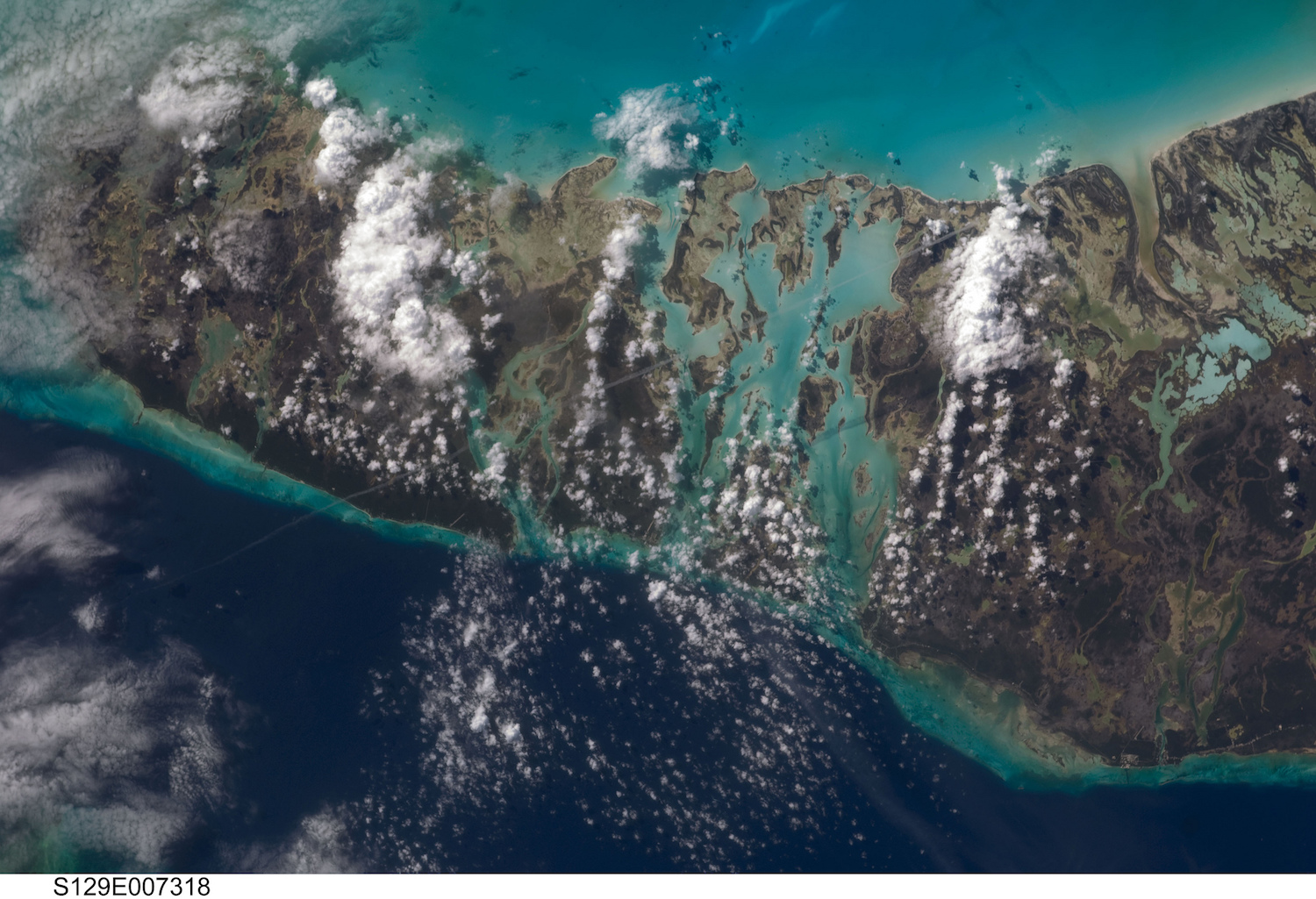 Earth & Space
Earth & Space
The shape of the ocean: deep waters and their movement
Deep ocean waters hold enormous amounts of carbon, nutrients and heat. Their influence on Earth’s climate depends critically on the pace and pathways of their renewal. Contrary to conventional wisdom, researchers find that these pathways are intimately linked to the shape of the ocean.

Oceanographers know how the deepest reaches of the ocean are filled: by very cold and dense waters formed in contact with the polar air and ice of Antarctica. These dense Antarctic waters plunge under their own weight and snake along the global seafloor at depths exceeding four kilometers - over a dozen stacked Eiffel towers under the sea surface. However, the subsequent fate of cold Antarctic waters remains much more mysterious. Where do the waters escape the ocean abyss? How do they climb back toward their surface origin, thus closing the loop? In a recently published study, we demonstrate that the path followed by dense waters within the Pacific, Atlantic and Indian oceans is fundamentally linked to the shape of these ocean basins. Available charts of ocean depths thus provide a direct means to predict the movement of the deep, dense seawaters.
The argument can be cast in relatively simple terms. To move upwards, deep layers of water must become lighter. This occurs mostly along the seafloor, where the heat from inside the Earth percolates into the ocean. More importantly, this is also where turbulent flows that mix dense waters with lighter ones happen to be most energetic. As a result, waters that are in contact with a larger area of the seafloor move upwards faster. Charts of the submarine relief tell us that much of the ocean is about four kilometers deep, and comparatively little of the ocean is between one and two-and-a-half kilometers deep. Translated into the movement of seawater: the fastest upward flow must be around four kilometers depth, whereas little upward flow traverses depths shallower than two-and-a-half kilometers.
Imagine now the cold dense waters coming from the south - from Antarctica - into, say, the Pacific abyss. They will spread northward at depths greater than four kilometers, get rapidly pumped upward near the depth of four kilometers, and return southward deeper than two-and-a-half kilometers as they cannot climb any further. This picture entails surprising consequences for the waters floating between depths of one and two-and-a-half kilometers. In the Atlantic ocean, this mid-depth layer is filled by waters formed around Greenland. But in the Pacific and Indian oceans, the mid-depth layer turns out to be excluded from the overall movement of dense waters. A large pool of quasi-stagnant, isolated waters must then fill the mid-depths of the Pacific and Indian basins.
Intrigued by this finding, we sought its confirmation in a special seawater property: the concentration of "carbon-14". Carbon-14 is an unstable form of carbon often used by scientists to date substances collected in the field: the lower the substance's carbon-14 content, the longer the time elapsed since the substance was last in contact with the atmosphere. The same works for seawater: low carbon-14 concentrations tag relatively old ocean waters - that is, waters separated from the atmosphere for a long period. Analysis of available carbon-14 measurements in the deep ocean revealed a clear relationship between the seafloor geometry and carbon-14 concentrations. In particular, the lowest concentrations occur within the mid-depth layer of the Pacific and Indian oceans, in agreement with the predicted isolation of these waters.
The identified connection between the shape of the seafloor and the movement of dense waters is not a mere curiosity. The renewal rates and pathways of the deep ocean determine the amount of heat, carbon and nutrients that the vast deep ocean volume is able to store. The refined description of dense water pathways may therefore help to quantify how much carbon dioxide and heat can remain trapped in the ocean over coming centuries. The results may also help to understand the ocean's role in past climate transitions. The seafloor shape has barely changed over the past few million years. Yet the Earth has experienced a number of different climates - such as the ice ages - over this time period. During these periods, deep water properties and sources may have been very different from today, but the upward movement of deep waters has remained tied to the seafloor.
Original Article:
C. de Lavergne, G. Madec, F. Roquet, R. M. Holmes, T. J. McDougall, Abyssal ocean overturning shaped by seafloor distribution. Nature 551, 181-186 (2017)Edited by:
Massimo Caine , Founder and Director
We thought you might like
Ocean acidification and its effects on coral reef growth
Jul 8, 2016 in Earth & Space | 3.5 min read by Rebecca AlbrightResetting nature’s clock: shifting seasons and species relationships
Sep 14, 2016 in Earth & Space | 3.5 min read by Stephen Thackeray , Sarah BurtheThe silent battle of young corals against ocean acidification
Oct 19, 2016 in Earth & Space | 4 min read by Taryn FosterFor polar bears the cost of living is rising
Mar 13, 2018 in Earth & Space | 4 min read by George DurnerMore from Earth & Space
Discovery of the first radiation belt beyond the Solar System
Jan 27, 2025 in Earth & Space | 3.5 min read by Juan Bautista Climent OliverOne million (paper) satellites
Jan 24, 2025 in Earth & Space | 3 min read by Ewan Wright , Andrew FalleVolcanic Ash: A Nutrient Boost for Reef-Building Corals
Sep 18, 2024 in Earth & Space | 4 min read by Frank Förster , Tom SheldrakeAmmonia Energy: A Call for Environmental Awareness
Aug 29, 2024 in Earth & Space | 3.5 min read by Matteo Bertagni , Robert Socolow , Amilcare PorporatoLikely increase in coral thermal tolerance at a Pacific archipelago
Dec 29, 2023 in Earth & Space | 3 min read by Liam LachsEditor's picks
Trending now
Popular topics


